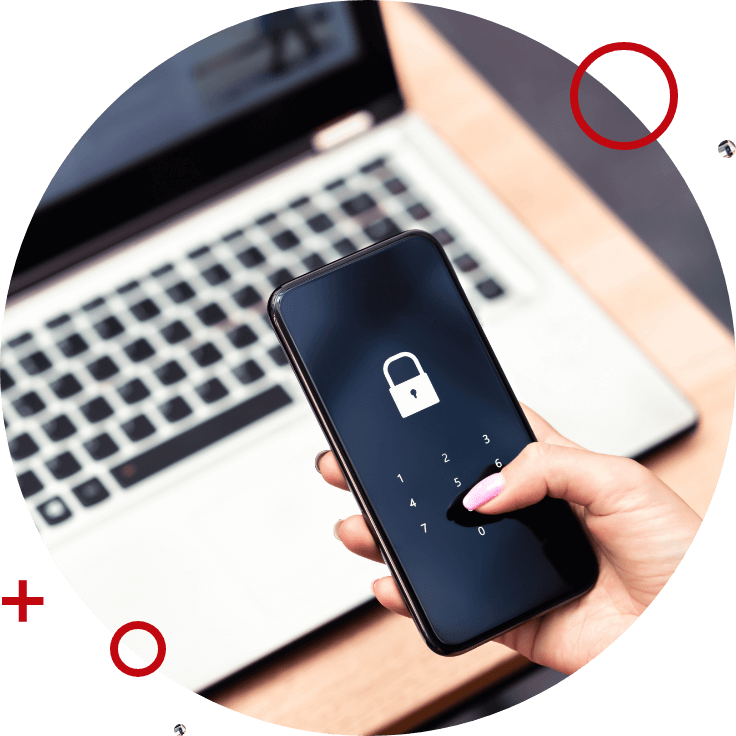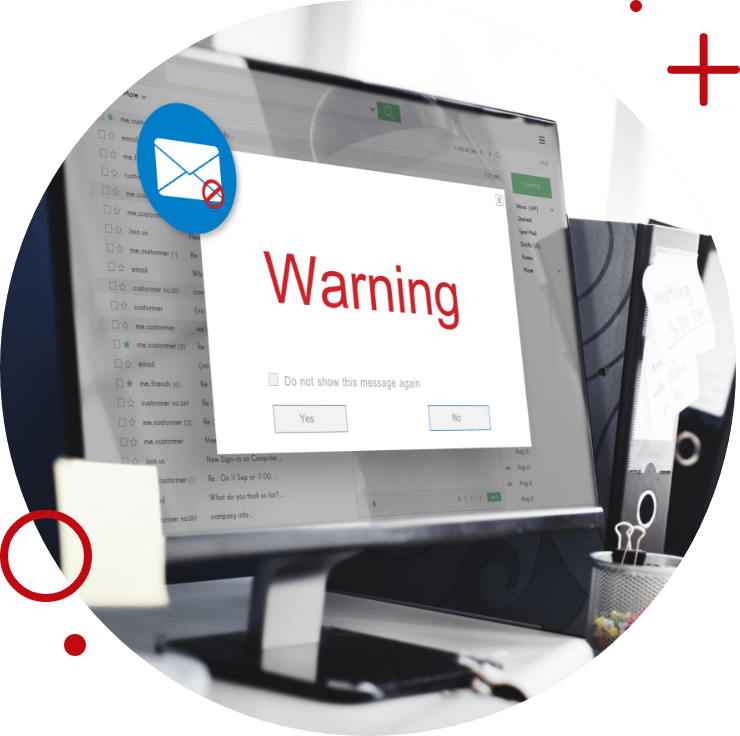Fraud Prevention
Safeguard Your Identity & Finances
Discover tips, resources, and strategies to identify and prevent fraud, protect your identity, and safeguard your financial well-being.
Discover tips, resources, and strategies to identify and prevent fraud, protect your identity, and safeguard your financial well-being.

The rate of identity theft-related fraud continues to rise. In 2022 alone, over $16 billion was stolen from 15.4 million U.S. consumers*. The following information has been provided to help protect you from the many types of financial fraud and identity theft. Select a topic below to learn how to identify a fraud or scam, how to protect your personal information, and how to report it if you have become a victim of fraud.
If you ever receive an email or phone call purporting to be from MY CREDIT UNION, do not provide any personal information. Always log into the MY CREDIT UNION site directly (by typing www.mymncu.org in your browser address bar) or contact one of our Member Service Representatives before divulging any information.
MY CREDIT UNION will NEVER make unsolicited phone calls, send text messages, or send emails requesting personal account information such as a full 16-digit card number, a full social security number, or a full account number.

Identity theft can occur when an individual obtains personal information, such as your social security number, date of birth, address, and financial account numbers. Once this information is obtained, the thieves will assume or take on your identity, allowing them to illegally purchase items or obtain credit.
Read how you can protect yourself from identity theft.
Protect Yourself. Don't Become Identity Theft's Next Victim.
There are simple precautions that will keep your identity safe. We've provided the following information as a courtesy to help protect you from identity fraud and other criminal activities. Review the information on these pages to learn how to protect your personal and financial information.
Id Theft Information & Resources
ATM fraud can occur when individuals lose their card, give their card to someone else to use, or when their Personal Identification Number's confidentiality is compromised. By following these simple guidelines you can greatly reduce your exposure to ATM fraud.
Tips for protecting yourself against ATM fraud
In addition to the types ATM fraud that most of us are now aware of, there are two new types that can clean out your account quickly -- card withholding and skimming.
Card withholding occurs when your card gets stuck in the ATM, you can't get it out, and you leave the card in the ATM planning to contact the financial institution the next morning. When you call you find that the card was not stuck in the ATM. What happens is that thieves put a substance into the ATM card slot which will cause your card to stick inside the ATM. They leave the ATM and wait for someone to attempt to use it. They then get in line behind you and try to watch you enter your Personal Identification Number (PIN). This is very common at drive-up ATMs where the user may not be paying attention to other people or cars nearby.
The thieves even go so far as to put up a sign on the ATM stating: "If your card gets stuck, enter your PIN three separate times to retrieve it." This gives them three tries to watch you enter your PIN. After you leave frustrated, and you're planning to contact the ATM owner the next morning, they remove your card with a pair of pliers. They can then use your card at other ATMs and Point-of-Sale (POS) terminals.
Skimming is done at businesses that offer Point-of-Sale (POS) devices for you to pay with your ATM card, such as gas stations. The thieves convince an employee to allow them to connect a laptop computer to the POS machine. The laptop is usually stored under the counter where the POS device is located. When you swipe your card in the POS device to make a payment the information on the magnetic strip on your ATM card is copied and loaded onto a disk. Thieves may also install a hidden video camera that records you entering your PIN. They then match the magnetic information to the PIN and access your accounts.
If you suspect fraud, it is important to act quickly to minimize potential damage and your own liability. It is important to keep a detailed account of conversations you have with authorities and financial institutions.
Credit Bureaus
Immediately call the fraud units of the three credit reporting companies -- Experian, Equifax and Trans Union. Ask that your account include a statement referencing the possibility of fraud.
Creditors
Contact all creditors immediately with whom your name has been used fraudulently -- by phone and in writing. Monitor your accounts closely for any further fraudulent activity.
Law Enforcement
Report the crime to police with jurisdiction in your case. Provide any documentation that you have collected. Get a copy of your police report. Keep the phone number of your fraud investigator handy and give it to creditors and others who require verification of your case.
Financial Institutions
If you have checks stolen or bank accounts set up fraudulently, contact the institution to report the crime. Put stop payments on appropriate outstanding checks. Close your checking and savings accounts and open new accounts. If your ATM card is stolen or compromised, get a new card and PIN. When choosing a PIN, don't use common numbers like the last four digits of your Social Security number, your date of birth, license number or street address.
U.S. Postal Service
Notify the local Postal Inspector if you suspect an identity thief has filed a change of your address with the post office or has used the mail to commit credit or bank fraud.
Social Security Administration
Call to report fraudulent use of your Social Security number.
Department of Motor Vehicles (DMV)
Call to see if another license was issued in your name. Go to your local DMV to request a new number. Also, fill out the DMV's complaint form to begin the fraud investigation process. Send supporting documents with the completed form to the nearest DMV investigation office. Request a driver's license number different than your Social Security number if available in your state.
Civil Courts
If a civil judgment has been entered in your name for actions taken by your impostor, contact the court where the judgment was entered and report that you are a victim of identity theft. If you are wrongfully prosecuted for criminal charges, contact the state Department of Justice and the FBI.
This guide provides tips for protecting yourself against check cashing fraud. Check cashing fraud occurs when individuals use information taken from your checks, or the checks themselves, to access your accounts and commit fraudulent acts. By following these simple guidelines you can greatly reduce your risk of becoming a victim.
Tips for protecting yourself against check cashing fraud
Credit card fraud generally occurs when cards or card numbers are compromised. By following these simple guidelines your potential for loss can be minimized.
Tips for protecting yourself against credit card fraud
Phishing is an internet scam in which e-mail spam or pop-up messages are used to deceive you into divulging personal or financial information over the internet. Phishers will send you an email or a pop-up message that appears to be from a company that you deal with – your credit card company, credit union or a government agency. The message usually requests that you update or validate account information and it will direct you to a website that looks just like the legitimate organization’s website, but it isn’t. The purpose of the bogus website is to deceive you into entering your personal information so the scammer’s can steal your identity and commit crimes in your name.
Protect yourself against "Phishing Scams"
Vishing is a scam similar to Phishing, the scam involves sending a spam email or pop-up message telling you that your account has been compromised and will instruct you to call a phone number to verify your account information. An official sounding automated message will ask you to enter your personal financial information such as your 16 digit credit card number. Some of these scams involve a telephone call to the victim directly in which the caller already has your credit card number but asks you to verify the valuable three digit security code.
Protect yourself against "Vishing Scams"